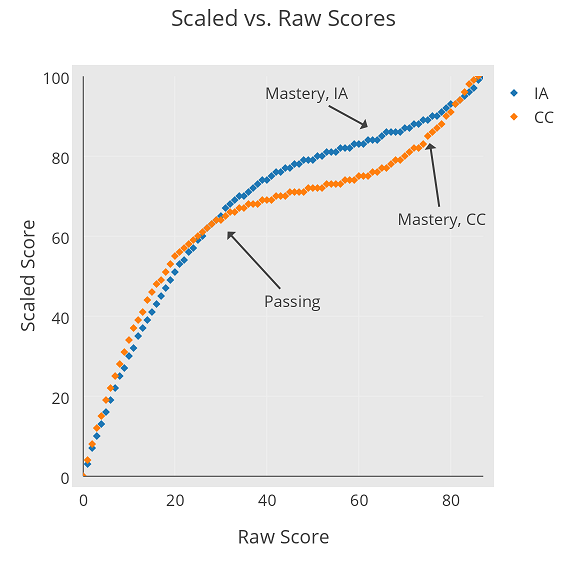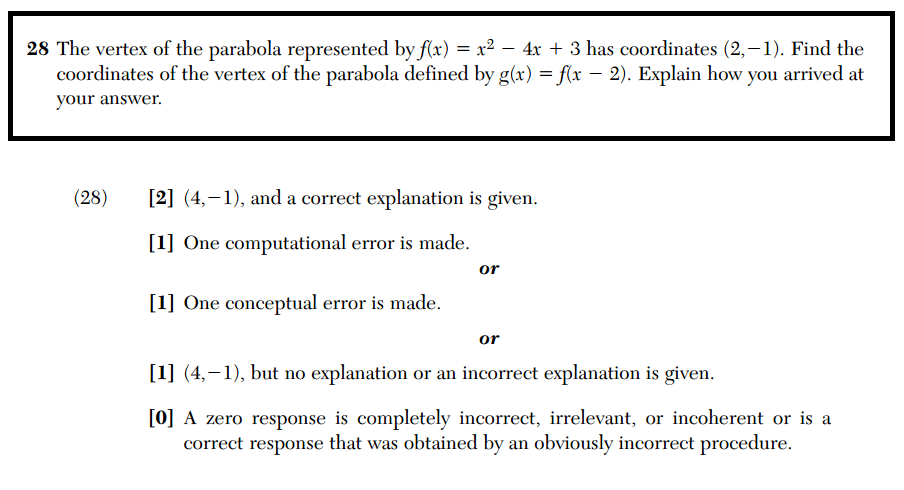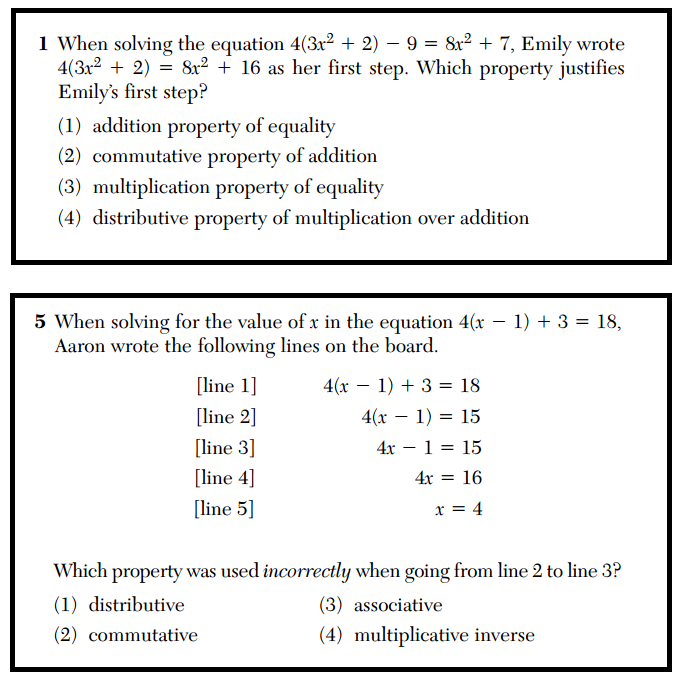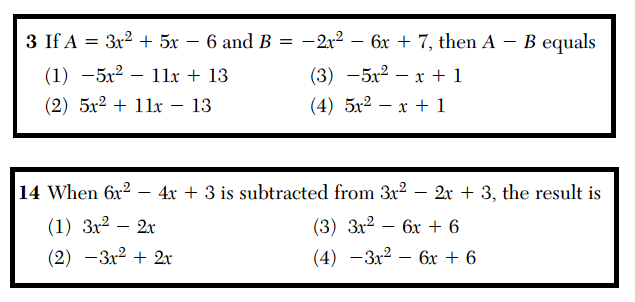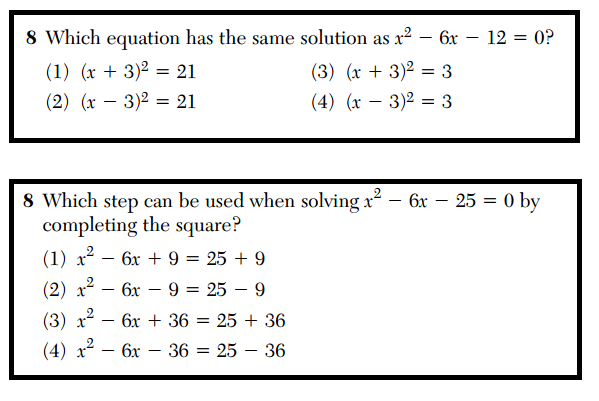Here is another installment in my series reviewing the NY State Regents exams in mathematics.
June, 2014 saw the administration of the first official Common Core Regents exam in New York state, Algebra I (Common Core). Roughly speaking, this exam replaces the Integrated Algebra Regents exam, which is the first of the three high school level math Regents exams in New York.
So how does the new Algebra I (Common Core) exam compare with the old Integrated Algebra exam? In terms of mathematical content, one difference jumps out immediately: functions.
On the 2014 Algebra I (Common Core) exam, the word “function” appears 17 times. On the 2014 Integrated Algebra exam, the word “function” appears once.
An informal reading indicates that functions play a part in 14 of the Algebra I (Common Core) exam questions, which are worth a total of 36 points. This is around 42% of the exam (36/86 points). In addition to several direct, function-related questions, like about domains and modeling, we see a number of familiar questions recast in the language of functions.
For example, number 12 from the Algebra I (Common Core) exam asks about “zeros of the function”. On an Integrated Algebra exam, the same type of question would likely have been asked in the context of “solving an equation”.
 I’m not going to dispute the importance of this concept: functions are central objects in mathematics, and in high school math in particular. But this is clearly a substantial change in focus for this exam, and I doubt many could have predicted the extent of this change. Functions should be covered in any algebra course, but this dramatic shift in assessment undoubtedly penalized many students. A student with a weak grasp on this one concept would face a huge obstacle on the Algebra I (Common Core) exam.
I’m not going to dispute the importance of this concept: functions are central objects in mathematics, and in high school math in particular. But this is clearly a substantial change in focus for this exam, and I doubt many could have predicted the extent of this change. Functions should be covered in any algebra course, but this dramatic shift in assessment undoubtedly penalized many students. A student with a weak grasp on this one concept would face a huge obstacle on the Algebra I (Common Core) exam.
In addition to this major shift in emphasis, several topics which were previously covered in the highest-level exam (Algebra 2 / Trig) are now on the Algebra I (Common Core) exam: recursively defined functions; correlation coefficient; and the quadratic formula. This does not come as a surprise, but it’s worth noting that these topics have been moved ahead by 2-3 years in the typical student sequence. Also of note was that students were asked to factor a fourth-degree polynomial (of quadratic type) on the Algebra I (Common Core) exam, which as far as I know has only previously appeared on the Algebra 2 / Trig exam.
Will the next iteration of Algebra I (Common Core) emphasize functions so heavily? What will the first iteration of Geometry (Common Core) exams look like? Our initial experience with Common Core Regents exams in New York suggest it will be hard to predict.
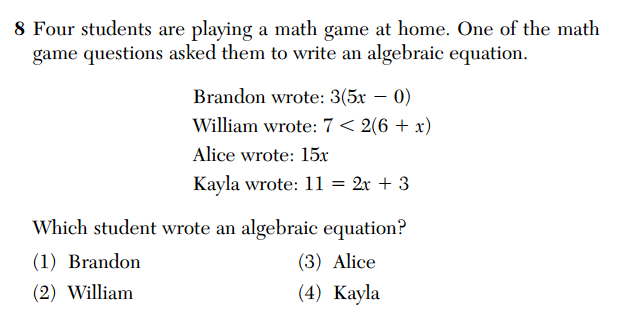 “Four students are playing a math game at home. One of the math game questions asked them to write an algebraic equation.“
“Four students are playing a math game at home. One of the math game questions asked them to write an algebraic equation.“